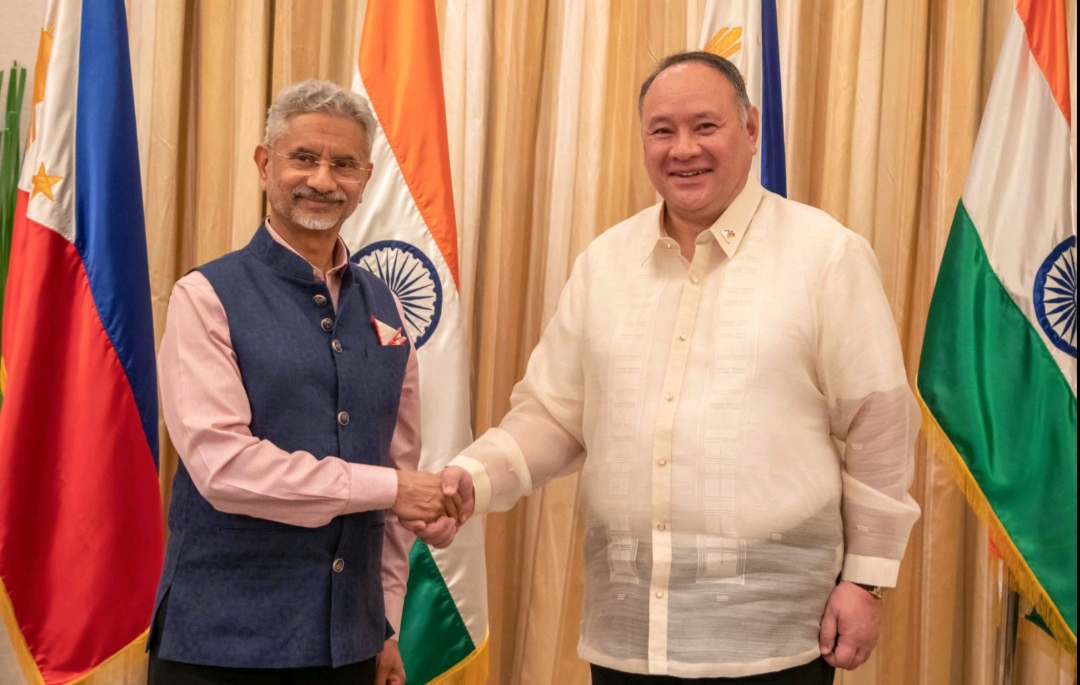DND gets India's support for development of credible defense posture for the Philippines

The Department of National Defense (DND) secured the commitment of India to establish a credible defense posture for the Philippines amid the escalating tension in the West Philippine Sea (WPS).
This, as Defense Secretary Gilberto Teodoro Jr. met with India's Minister of External Affairs, H.B. Dr. Subrahmanyam Jaishankar and his delegation on the sidelines of the latter's official visit to the Philippines last week.
During the meeting, Teodoro welcomed India's "unwavering support" for the Philippines' position on the West Philippine Sea as Jaishankar reaffirmed India's commitment to uphold a rules-based international order and promote peace and security in the Indo-Pacific region.
"In pursuing deeper defense and military relations, both officials agreed to convene multi-level dialogue mechanisms, conduct practical cooperative activities focused on capability development, and increase education and training exchanges," Defense spokesperson Arsenio Andolong said on Monday, April 1.
"As part of such efforts, both sides also agreed to promote collaboration among defense industries, enhance mobility and logistics cooperation, as well as explore investments on emerging technologies, cooperation on space domain awareness, and potential partnership on joint research and development (R&D)," he added.
Jaishankar underscored the need to enhance closer cooperation on maritime domain awareness to address "common security challenges."
While the Indian minister did not specify what those challenges were, both the Philippines and India are facing territorial and border disputes with China.
Just as the Philippines has overlapping territorial claims with China in the West Philippine Sea, India is dealing with boundary issues with China over their common Himalayan border and Beijing's growing presence in the Indian Ocean region.
But while New Delhi and Beijing's border dispute has simmered, Chinese and Philippine vessels were embroiled in escalating confrontation particularly in Ayungin (Second Thomas) Shoal.
Last month, seven Filipino military personnel were injured as Chinese vessels blasted them with water cannon during two separate resupply missions in the shoal.
Jaishankar shared to Teodoro the best practices of India's Information Fusion Centre-Indian Ocean Region (IFC-IOR) in promoting regional maritime safety through information sharing and collaboration among member-countries.
Meanwhile, Teodoro highlighted the possibility of cooperation between the Philippines and India on climate change mitigation to help secure vulnerable internal and external supply chains.
"Both officials looked forward to more robust defense and military engagements, particularly the conduct of ministerial-level meetings," Andolong noted.
India is eyeing to be a major player in the modernization program of the Armed Forces of the Philippines (AFP).
The AFP is implementing the Rehorizon 3, a revised military procurement plan, following the recent approval of a P3 trillion budget by President Marcos Jr.
Relatedly, India es expected to deliver "soon" the Philippines' first supersonic cruise missile system, the BrahMos.
In January 2022, the DND signed the contract for the procurement of the BrahMos missile system from BrahMos Aerospace Private Ltd. as part of the Shore-Based Anti-Ship Missile (SBASM) System Acquisition Project of the Philippine Navy worth $374,962,800 or around P18.9 billion.
The DND had said that the BrahMos missile system will be used by the Coastal Defense Regiment of the Philippine Marine Corps (PMC) to improve the country’s coastal defense capabilities particularly in the West Philippine Sea.
The project includes the delivery of three missile batteries, necessary Integrated Logistics Support (ILS) package, and training for its operators and maintainers. A single missile battery usually consists of three mobile autonomous launchers with two or three missile tubes each along with its tracking systems.
The acquisition of the BrahMos missile system is deemed crucial by the DND to boost the Navy’s capability to defend the country’s maritime borders and complement the efforts of its surface assets during patrol operations.